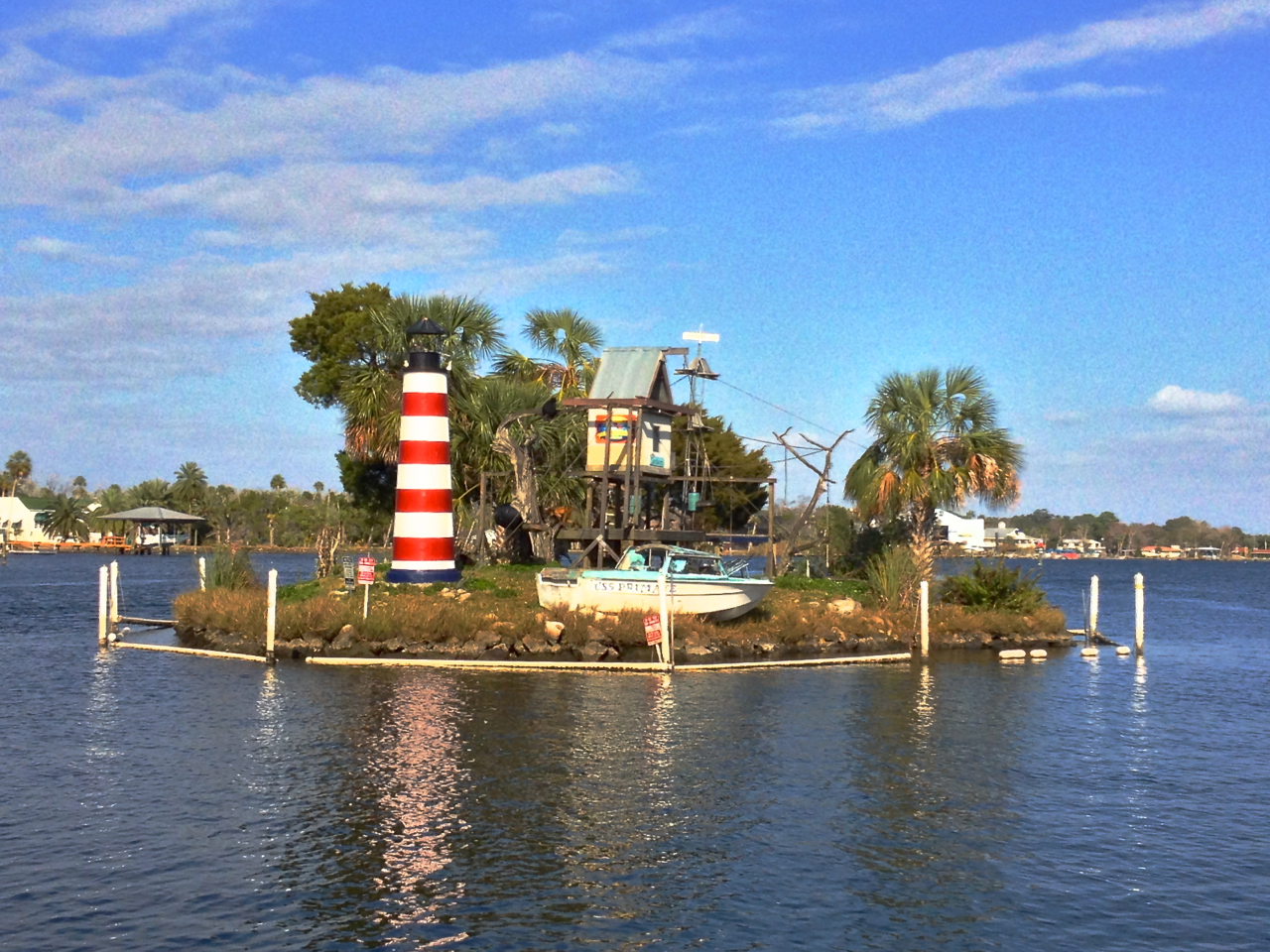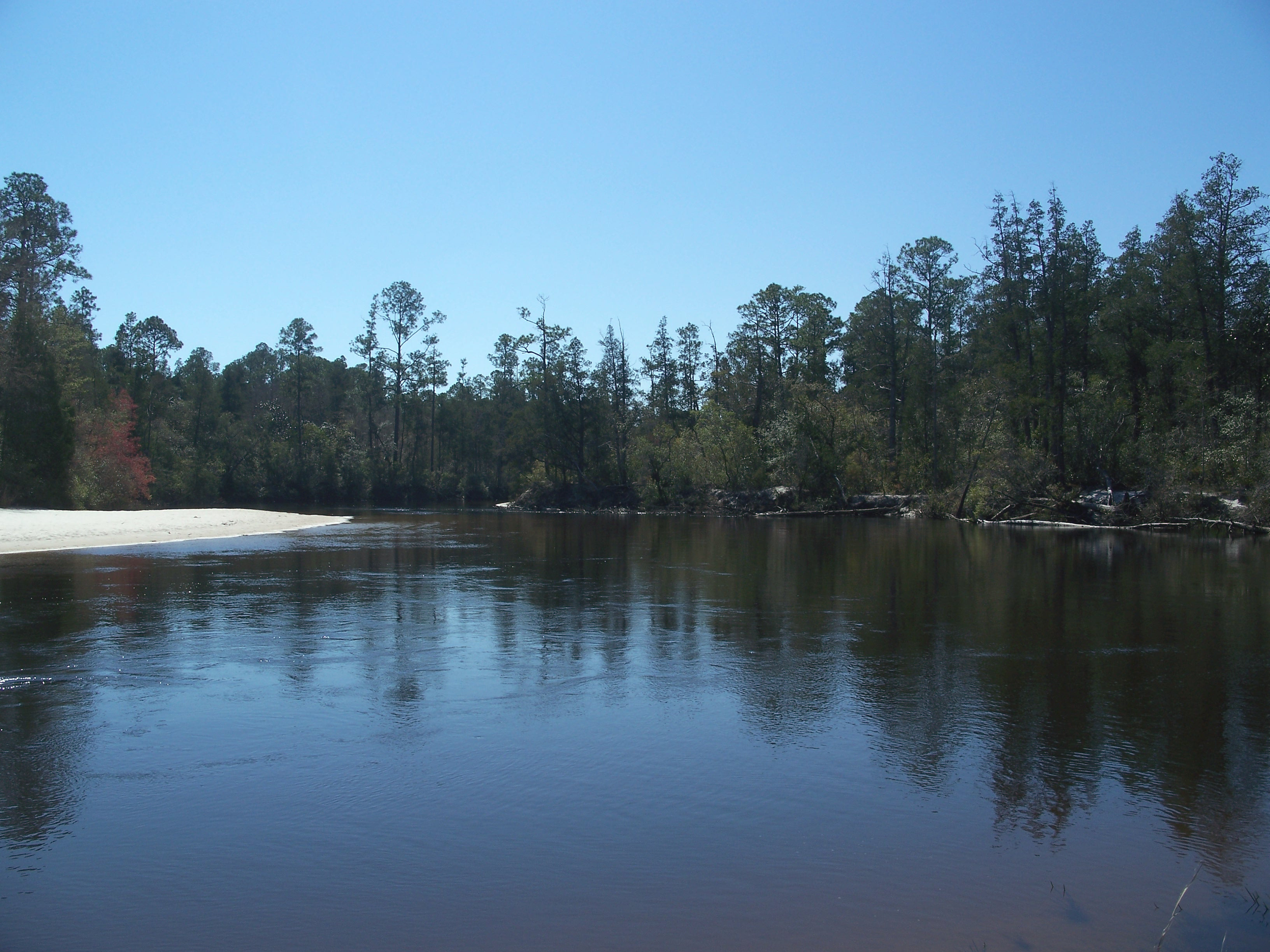|
Homosassa River
Homosassa River is a U.S. Geological Survey. National Hydrography Dataset high-resolution flowline dataThe National Map , accessed April 18, 2011 river in Citrus County, Florida, in the western part of the state. Its headwaters are the Homosassa Springs, and from there it flows west into the Gulf of Mexico. The river is home to common bottlenose dolphins, West Indian manatees, alligator snapping turtles, nine-banded armadillos, snakes, birds, eastern box turtles, oysters, raccoons, American alligators, Virginia opossums, North American river otters and many species of both freshwater and saltwater fish. The Homosassa River is an estuary, which means that as it moves inland, it changes from salt water to fresh very gradually, and the river is brackish. The river is good for canoeing and kayaking. Monkey Island Monkey Island is a small island in the Homosassa River next to the Florida Cracker Riverside Resort and downtown "Old" Homosassa Florida. The island was originally crea ... [...More Info...] [...Related Items...] OR: [Wikipedia] [Google] [Baidu] |
Homosassa Springs Wildlife State Park
Homosassa Springs Wildlife State Park is located near Homosassa Springs, Florida, in the United States. The park is one of the notable locations in the state to view manatees. Visitors can get close to the animals on a floating observatory. Black bears, bobcats, white-tailed deer, American alligators, and river otters can also been seen in the park. The park is also home to the hippopotamus Lu, famously known for his performances in many movies for the past 40 years. The park is officially named Ellie Schiller Homosassa Springs Wildlife State Park in honor of Elmyra Felburn Schiller (1943 – 2009), a benefactor of the Florida state park system. History Native Americans lived in the area of Homosassa Springs, Florida, long before the first nonindigenous people entered the area. Within 200 years of encounter, the original inhabitants of the area were decimated by disease and colonial warfare. Soon after that, the area was resettled by several groups of Native Americans displa ... [...More Info...] [...Related Items...] OR: [Wikipedia] [Google] [Baidu] |
Raccoon
The raccoon ( or , ''Procyon lotor''), sometimes called the common raccoon to distinguish it from other species, is a mammal native to North America. It is the largest of the procyonid family, having a body length of , and a body weight of . Its grayish coat mostly consists of dense underfur, which insulates it against cold weather. Three of the raccoon's most distinctive features are its extremely dexterous front paws, its facial mask, and its ringed tail, which are themes in the mythologies of the indigenous peoples of the Americas relating to the animal. The raccoon is noted for its intelligence, as studies show that it is able to remember the solution to tasks for at least three years. It is usually nocturnal and omnivorous, eating about 40% invertebrates, 33% plants, and 27% vertebrates. The original habitats of the raccoon are deciduous and mixed forests, but due to their adaptability, they have extended their range to mountainous areas, coastal marshes, and urban ... [...More Info...] [...Related Items...] OR: [Wikipedia] [Google] [Baidu] |
Rivers Of Florida
This is a list of streams and rivers in the U.S. state of Florida. With one exception, the streams and rivers of Florida all originate on the Coastal plain. That exception is the Apalachicola River, which is formed by the merger of the Chattahoochee River, which originates in the Appalachian Mountains, and the Flint River, which originates in the Piedmont. Most streams and rivers in Florida start from swamps, while some originate from springs or lakes. Many of the streams and rivers are underground for part of their courses. The Everglades, sometimes called the "river of grass", is a very wide and shallow river that originates from Lake Okeechobee. Most of Florida's streams and rivers drain into the Gulf of Mexico. Drainage on the east coast of Florida is dominated by the St. Johns River, which, with the swamps that form its headwaters, extends parallel to the coast from inland of Fort Pierce, Florida, Fort Pierce to Jacksonville, Florida, Jacksonville. By drainage basin Atlantic ... [...More Info...] [...Related Items...] OR: [Wikipedia] [Google] [Baidu] |
Homosassa, Florida
Homosassa is a census-designated place (CDP) in Citrus County, Florida, United States. The population was 2,578 at the 2010 census. History Homosassa is derived from a Seminole Indian name meaning either "river of fishes" or "pepper ridge". In 1851, David Levy Yulee established a sugar plantation on the Homosassa River, close to the current town of Homosassa. The plantation was worked by approximately 1,000 slaves, but Yulee was an absentee owner, spending most of his time in Fernandina. Among the crops raised were sugar cane, cotton, and citrus. The Yulee Groves were one of the first in Florida to grow sweet oranges budded from sour orange stock. The mill, which was steam-driven, operated from 1851 to 1864 and produced sugar, syrup, and molasses, the last of which was part of the rum-making process. After the Civil War ended in 1865, Yulee was imprisoned, the slaves were freed, and the site was abandoned. The remains of the plantation are preserved at the Yulee Sugar Mill Ru ... [...More Info...] [...Related Items...] OR: [Wikipedia] [Google] [Baidu] |
Monkey Island On Homosassa River, Florida USA, Jan 2013
Monkey is a common name that may refer to most mammals of the infraorder Simiiformes, also known as the simians. Traditionally, all animals in the group now known as simians are counted as monkeys except the apes, which constitutes an incomplete Paraphyly, paraphyletic grouping; however, in the broader sense based on cladistics, apes (Hominoidea) are also included, making the terms ''monkeys'' and ''simians'' synonyms in regards to their scope. In 1812, Étienne Geoffroy Saint-Hilaire, Geoffroy grouped the Ape, apes and the Cercopithecidae group of monkeys together and established the name Catarrhini, "Old World monkeys", ("''singes de l'Ancien Monde''" in French language, French). The extant sister of the Catarrhini in the monkey ("singes") group is the Platyrrhini (New World monkeys). Some nine million years before the divergence between the Cercopithecidae and the apes, the Platyrrhini emerged within "monkeys" by migration to South America likely by ocean. Apes are thus de ... [...More Info...] [...Related Items...] OR: [Wikipedia] [Google] [Baidu] |

_2.jpg)

